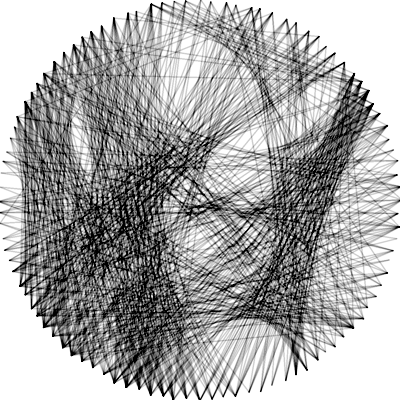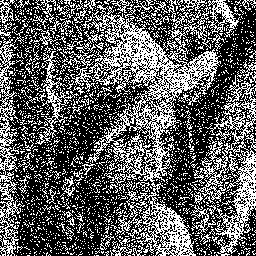I was inspired by Rapidly Exploring Random Trees, and wanted to make a halftoning method based on that. I wanted more lines in dark areas and fewer in bright areas. With some tweaks on the concept, I’ve made something that works reasonably well. It probabilistically chooses new line segment endpoints that are relatively close to […]
Branching Lines









